How to Clean Car Battery Corrosion: 3 Simple Steps to Follow
Corrosion can form in and around the battery’s terminals and around the battery cable ends, especially when the engine and battery are not running, causing the terminals to oxidize. This issue is often overlooked, however, car battery corrosion can cause trouble starting your car, and the battery may not be fully charging when you are driving. Learn the simple steps of how to clean car battery corrosion now to extend your battery’s lifespan and optimize its performance.
In this comprehensive guide on how to remove corrosion on car battery, you will learn the different causes for corrosion, the detailed steps and pro tips on cleaning car battery corrosion, plus many handy maintenance tips to keep your battery always in tip-top shape.
What Is Car Battery Corrosion?
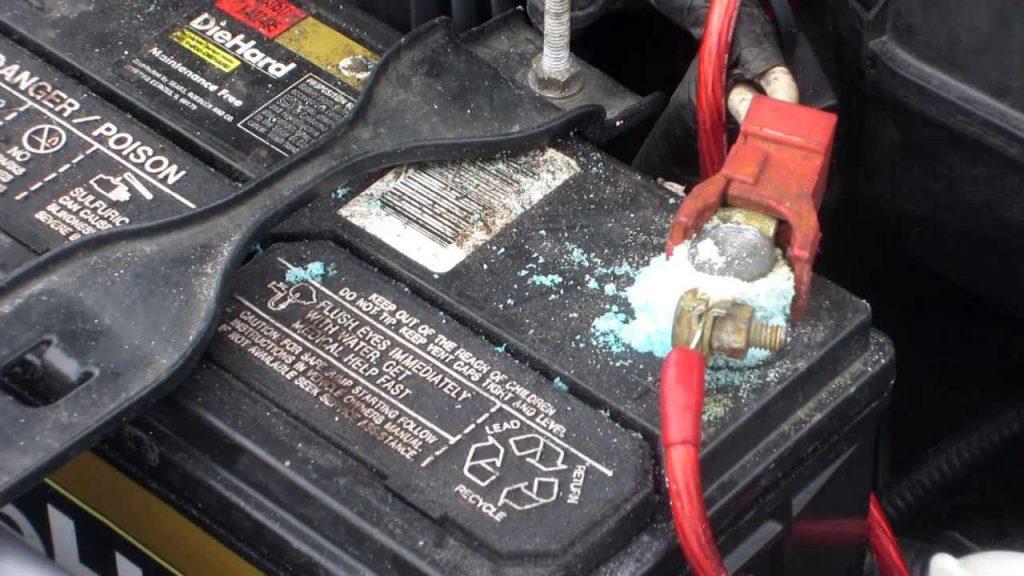
Corrosion is a problem with all types of car battery. Car battery corrosion looks like a crusty, ashy substance that forms around the battery ports. This type of corrosion is created because of the chemical reaction that goes into the terminals and battery cable ends.
Most batteries are filled with sulfuric acid, and when the battery is charging or discharging. During the charging and discharging process, this acid is heated or cooled producing a by-product — hydrogen gas. Corrosion is caused by the hydrogen gas being released from the sulfuric acid inside the battery.
As the gasses react to the external environment, it produces a corrosive environment. Since the terminals are in direct contact with the battery, they are exposed to this corrosive environment or “acidic fumes”, and thus are prone to corrosion.
Another type of corrosive process you might see on your battery terminals occurs when the copper on the terminal clamp gets wet and reacts with the lead electrode it is connected to. This type of corrosion results in a greenish substance on the terminal itself. Otherwise, if the terminal clamps are made of aluminum, the corrosion will be in the form of a white substance.
Finally, another corrosive process called “sulfation” happens when a battery isn’t regularly recharged, either because it’s only being driven for short trips or because it’s aging. This type of corrosion will typically form white sulfur crystals on the negative battery terminal or occasionally around the battery itself if it’s leaking sulfuric acid. In some cases, these sulfur crystals can also build up around the positive electrode if the alternator is overcharging the battery.
How Corrosion Affects Your Car
In essence, the battery can only do its job when the connections are intact. Corroded cables and terminals, or loose fitting terminals alike, can limit the alternator’s ability to charge the battery and provide power to the car and its electrical accessories like radio and headlights.
It should be noted that small amounts of corrosion are not usually a serious problem; they simply reflect your car’s normal wear and tear over the years. That said, corrosion can get worse and starts to become an issue especially when subjected to higher temperatures during the summer months. In warmer conditions, larger buildups are more likely to form, which will act as an insulator that will prevent the battery from accepting or delivering a charge.
Leaving corrosion unchecked will cause problems over time, as corrosion impairs the connection to your battery and in many cases can lead to permanent battery failure. When that happens, you will have to go through the troubles of removing and replacing your battery.
The battery is a critical component that gets your car going. Its health affects whether your vehicle can run smoothly or at all, and “health” here also includes basic hygiene maintenance that every driver must perform on a regular basis.
Read more
What Causes Battery Corrosion?
To properly care for your precious batteries, before we proceed to cleaning car battery corrosion, you should grasp the most common causes of car battery corrosion below:
Undercharging
If corrosion occurs on the negative battery terminal only, this is typically a symptom of your car’s battery being undercharged. The most common reason for such undercharging is the alternator not having sufficient time to replenish lost battery capacity due to high electrical demand, and/or the vehicle is powered only for a short period of time each time it runs.
Overcharging
If battery corrosion is present on the positive battery terminal, this is a symptom of overcharging. If your battery is either the flooded or sealed type, overcharging the battery can push the electrolyte out of the vents or cracks, thus causing corrosion.
Reaction in copper clamps
Copper is used to make the clamps that connect the wires and the battery. If you are good at chemistry, you will definitely know that copper is unable to corrode all by itself. However, the current that overpasses through it produces copper sulfate, thus resulting in corrosion on the battery terminal.
Overfull battery
Filling too much battery water into a battery is another reason for corrosion on battery terminals. And you know battery terminals are made of metals which can be corroded. Therefore, if you fill too much battery water into your battery, the excess water will come out of the vents and then corrode your battery terminals.
Electrolyte leakage
One of the reasons causing battery terminal corrosion is electrolyte leakage. If a battery is not well-maintained, the electrolyte will leak out and accumulate on the battery terminals, causing corrosion.
Battery age
If your battery is over 5 years old, of course, you will see corrosion on it. So in this case, don’t hesitate to replace the expired battery with a new one.
Read more
How to Clean Car Battery Corrosion: 3 Detailed Steps
You can learn how to clean corrosion off car battery by using both household items and professional-grade supplies. Here, we will show you how to handle with battery corrosion by both methods in 3 steps.
Step 1: Removing & Inspecting the battery terminals
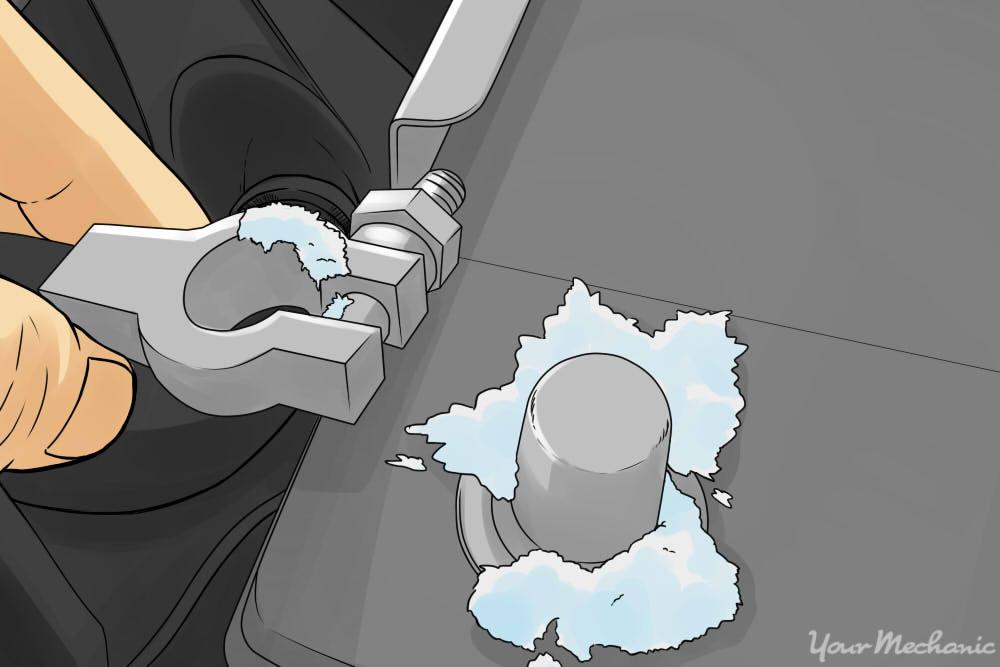
First of all, negative and positive cable ends need to be disconnected from the battery in order to clean the battery terminal connections properly.
Equipment needed:
- Goggles for protection
- Rubber gloves
- Battery terminal wrench
Caution: Car battery contains acid inside which may cause accidental injuries. Therefore, when working with a vehicle battery, you have to wear eye glasses and gloves in order to protect yourself from acid.
To do this step, follow the directions below:
- Loosening the battery cable ends. Disconnecting the negative cable is the first thing you have to do, then disconnecting the positive cable.
Now, it’s time to use the battery cable wrench. Place it on the battery cable end nut then twist it counter-clockwise.
- Loosening the nuts. If your battery is a top-post battery, loosening the nuts till there is no tension on the clamp is what you will just need to do.
- Loosening the cable end. If your battery is a side-post battery, you will need to loosen the cable end till it is removed.
- Lifting the top-post battery cable ends off the terminal. To do this, you should pry and wiggle the cable end off.
After removal, perform a visual inspection of the battery cables for excess wear or corrosion. Frayed or damaged battery cables are a common reason for difficult starting or failure to start.
Look for dried, cracked, and peeling insulation, which is the plastic or rubber cover on the cable, and replace them if needed. Also, check if the copper strands are intact; they serve to limit current flow and easily become brittle when exposed to the elements. Replace the battery cables in case of damage.
Read more:
Step 2: Cleaning the battery
2.1 Clean the battery by using household items
Pro tips: Here is how to clean car battery corrosion using available household items:
Equipment needed:
- Baking soda
- Water
- A wire brush or a stiff-bristled brush
- Petroleum jelly
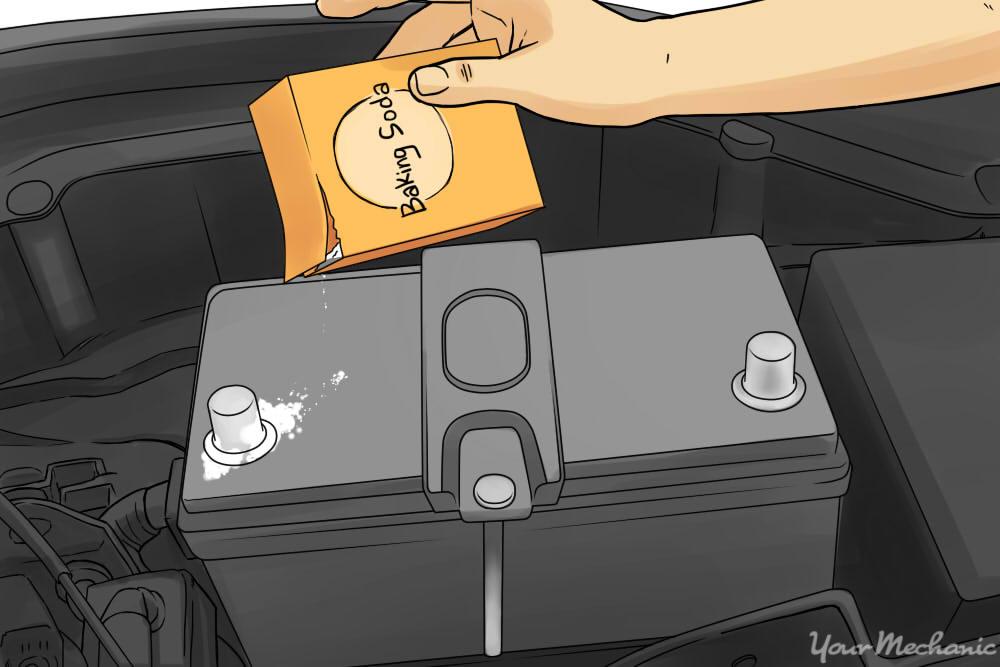
As you can see, with this method, you don’t need to use specific materials to clean the battery terminals of your car. Some simple household things are enough for you to restore a proper connection and clean the battery of your car.
* Important note: Never use Coca-Cola to remove battery corrosion. The synthetic sugars and phosphoric acid in Coca-Cola can cause further damage to your engine and surrounding components.
- Firstly, you cover both battery terminals by baking soda. Sprinkle enough baking soda powder to make a coat for the terminals and the small area around the terminal as well.
- Secondly, you need 2 tablespoons of water to pour on each terminal. After pouring water, you will see the baking soda reacting and bubbles will appear ferociously from the chemical reaction.
The chemical reaction between the mixture of acidic corrosion + baking soda + water on the terminals of car batteries will neutralize the acid, thus it is safe for you to handle.
- Do the same procedure on cable ends. You repeat the same procedure on the battery cable ends.
- Scrubbing the terminals is the next thing you need to do immediately. After you do the neutralizing procedure, the next step is to use a stiff brush to scrub off the car battery corrosion. You can use an old toothbrush or a wire brush to scrub all around the cable end inside and out as well as the terminal of your car battery.
- Rinsing with water. After you remove all the corrosion, the next step is to rinse the cable ends and the battery carefully with clean water.
- Drying the battery completely. After rinsing with water, you need to let your car battery dry entirely. Using compressed air is an effective way to blow the battery dry.
- Place a thin layer of petroleum jelly on your battery terminal. You need to smear a thin layer of petroleum jelly on the cable end and the car battery terminal as well. The layer of petroleum will conduct electricity between the cable end and the battery terminal and also prevent corrosion from appearing on the battery terminals.
Check out the video to know how to clean car battery corrosion in cheapest way:
2.2 Clean the battery by using professional-grade supplies
Equipment needed
- Battery terminal brush
- Battery cleaner spray
- Water
- Grease or protective spray
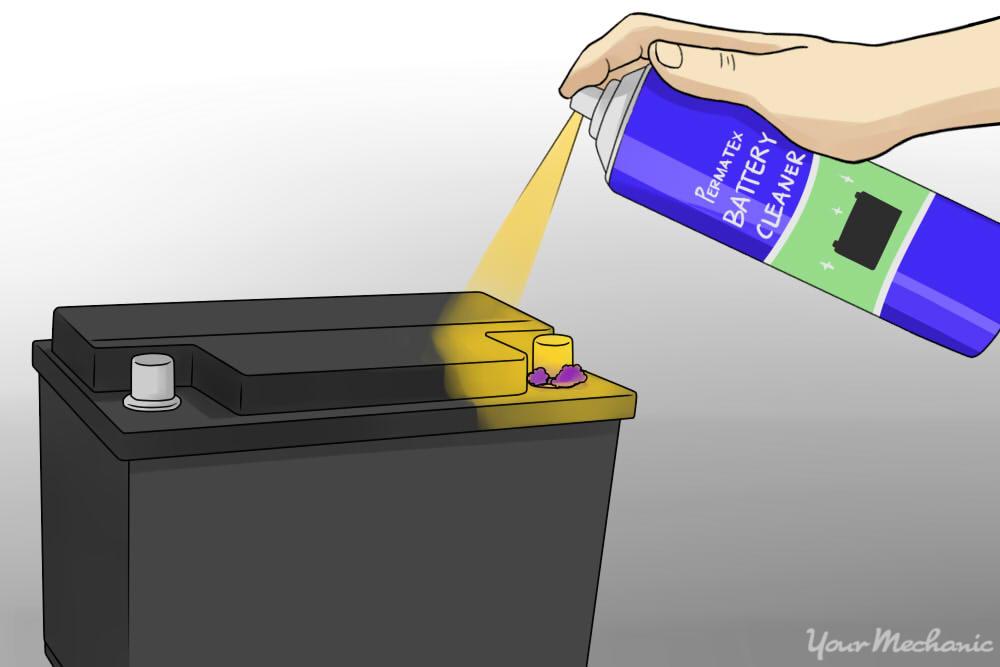
With the kit of specific materials, you can easily clean your car battery in a professional way. Here Below is how to do it:
- Spraying the cable ends. After disconnecting all battery cables, spray a commercial-grade battery cleaning agent if you find corrosion on the battery or battery cables. Using a commercial-grade battery cleaner is important because it not only removes the battery corrosion but also neutralizes the battery acid, and it is so much more effective than home remedies. A lot of spays are produced with a dye inside them that helps show up acid appearance. For instance, a yellow spray may change into purple if there is a presence of acid.
- Soaking for some minutes. Soak the battery and the cable ends in the spray for some minutes. You may notice the color of the spray dissipates.
- Spraying the cable ends and the battery terminals again. Use the cleaner spray to lightly spray the cable ends and the battery terminals again. If you observe that the color doesn’t change or there is a slight change, this means the acid is neutralized. Reapply if necessary.
- Rinsing with water. Spend water to rinse the battery entirely. Carefully clean and spray off the car battery and the areas around it.
Caution: You should be careful when using battery cleaner spray as some dyes in cleaner spray will stain your paint another color.
- Using a battery brush. After rinsing with water, it’s time to use a battery brush to clean the cable ends and the battery posts to remove additional residue.
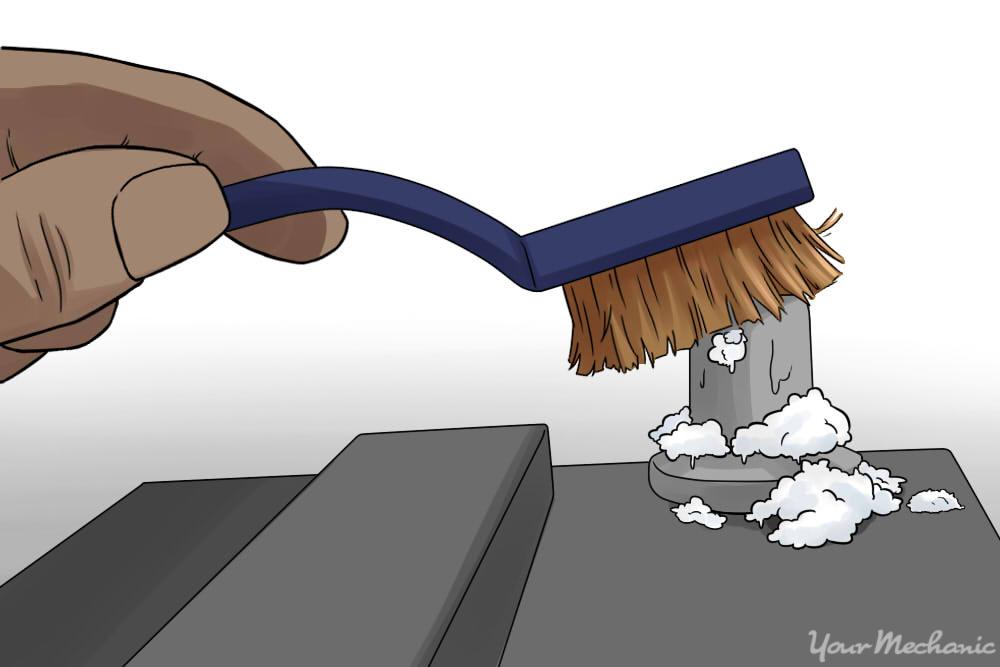
- You should put the battery brush over the battery terminal and twist it 3 to 5 times around the post if you have a top-post battery. Any corrosion on the battery terminal will be whisked away by the stiff wire bristles. Additionally, you can use a stiff-bristled brush to do it for a side-post battery.
- Uncapping the battery brush and then inserting it into the cable ends. In this step, you should turn it at least 3 or 4 times around in order to remove all corrosion that is built up inside the clamp.
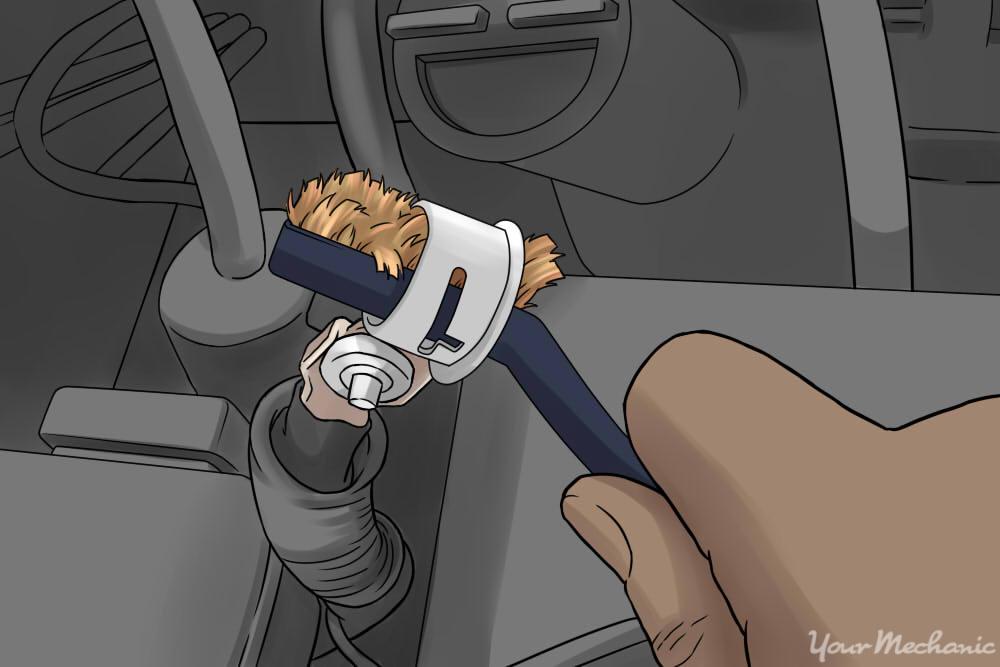
- Spraying the car battery terminals. Implementing preventive measures is just as important as learning how to clean car battery corrosion. Proper battery corrosion prevention is critical to the health of the car battery and your vehicle’s performance. After all that cleaning, remember to spray a battery corrosion preventative spray or brush-on compound, or apply a generous layer of petroleum jelly, or Vaseline, on the battery posts on the battery and battery terminals of the battery cable.
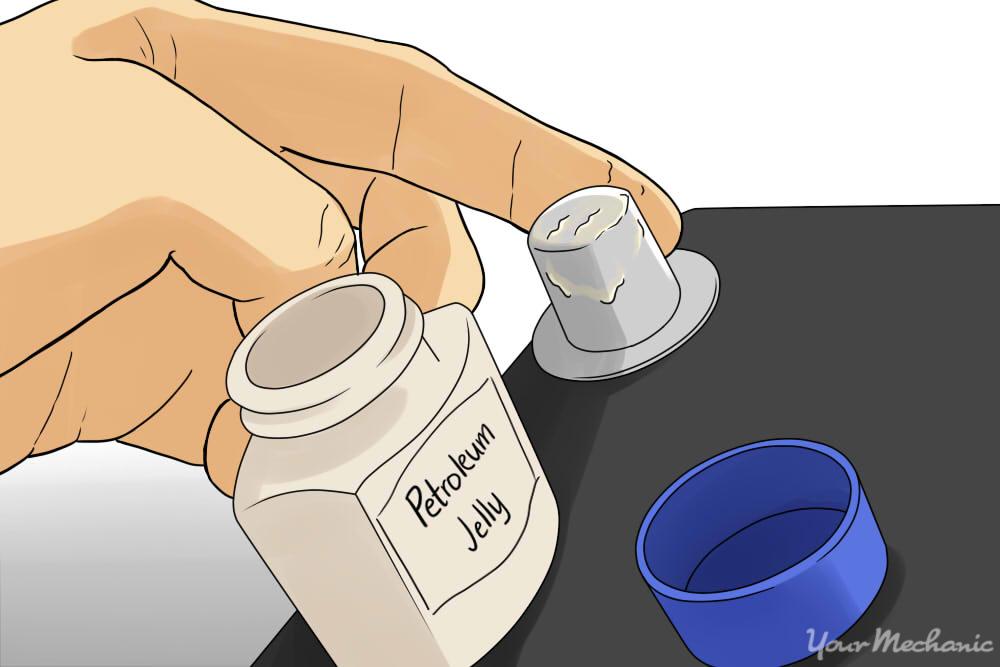
Step 3: Reconnecting the car battery terminals
In this step, a battery terminal wrench is all you need in order to make the cable ends reconnected.
Replacing the cables. First, you install the positive cable back into its position. For some top-post batteries, you will have to fully wiggle or tap the cable end down into its position.
Tightening the nut. You need to tighten the nut on the clamp to make it snug. Then try to add another quarter twist.
Placing negative cable. You reconnect the negative battery cable in the same way as you do with a positive cable.
Find out How to clean car battery corrosion by Coke in the video below














